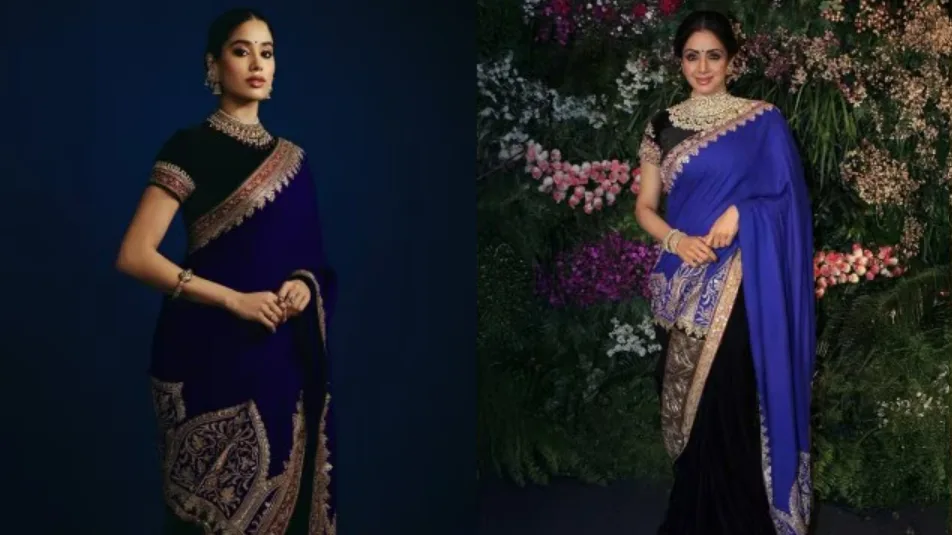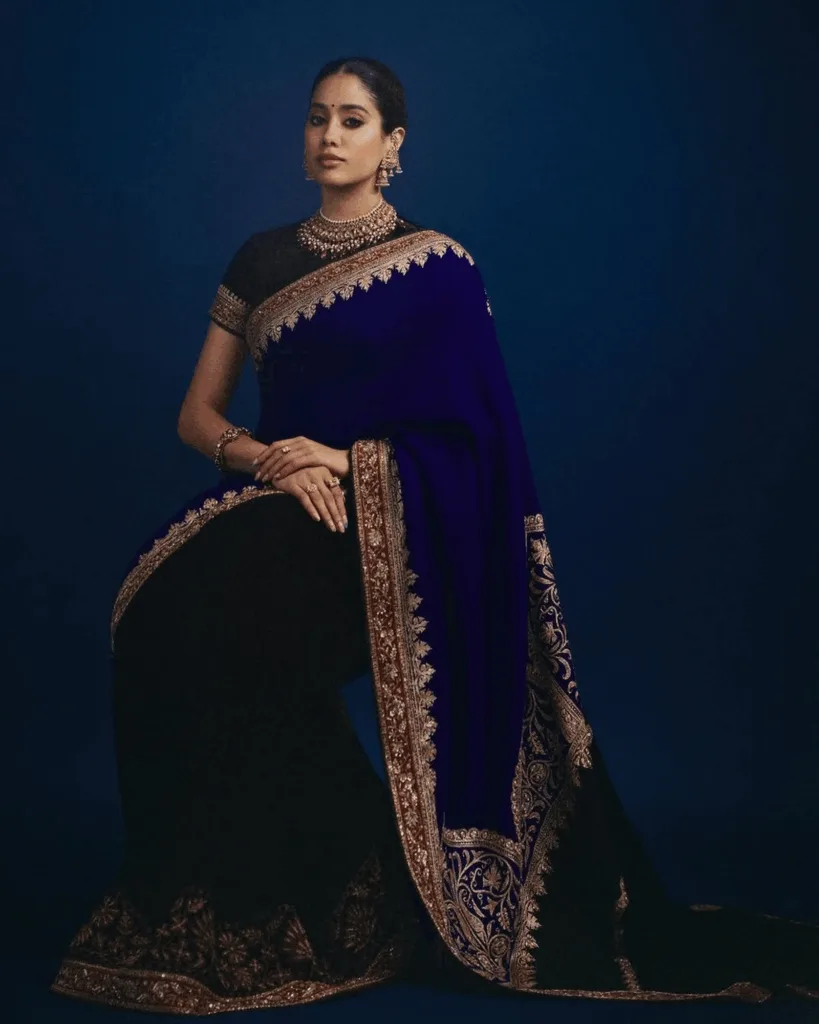Janhvi Kapoor Wears Sridevi’s Iconic Saree from Virat-Anushka Wedding – A Timeless Tribute to Her Mother
Sridevi had worn the same sari, designed by Indian designer Manish Malhotra, for Virat Kohli and Anushka Sharma’s wedding reception in 2017

Janhvi Kapoor pays tribute to Sridevi in her sari (Source: Instagram/@manishmatraworld)
Janhvi Kapoor dazzled in a royal blue pashmina sari by Manish Malhotra at the premiere of her latest film Homebound. She paid tribute to her late mother, Sridevi, by wearing the same heirloom sari that Sridevi had worn in 2017 for Virat Kohli and Anushka Sharma’s wedding reception.
Styled by Meagan Concessio, Janhvi paired the elegant blue drape with a black velvet blouse featuring an intricate brocade border. She completed the look with a heavy kundan choker, matching earrings, and bangles.
Manish Malhotra revealed on Instagram that Sridevi first wore the “royal blue pashmina #MMSaree in 2017.” The fabric featured gold tilla and chinar motifs, celebrating Kashmiri craftsmanship and centuries of artistry. Calling it “a legacy of love, heritage, and timeless style passed from mother to daughter,” Malhotra expressed how special this creation is to him.
He added, “Coming full circle, @janhvikapoor wore the same saree for the premiere of @homeboundthefilm as a heartfelt tribute to her mother. Showcasing gold tilla and chinar motifs, it celebrates Kashmiri craft, a tradition we have worked with for years. In Janhvi’s choice, the saree becomes more than clothing—it highlights sustainable fashion.”

Janhvi Kapoor in Sridevi’s iconic royal blue pashmina #MMSaree (Source: Instagram/@manishmatraworld)
Pashmina stands as a timeless textile rooted in tradition and legacy. Kirti Deshpande, design professor at the School of Design, MIT-WPU, Pune, explained that artisans craft Pashmina from a rare type of wool sourced mainly from Ladakh in northern India. She noted that the word “pashmina” comes from the Persian term pashm, which means soft wool. This luxurious fiber originates from the undercoat of Changthangi goats found in Ladakh, making it one of the most prized materials in the world.
Decoding its legacy
Pashmina carries a legacy deeply rooted in Himalayan culture, where artisans have practiced this craft for centuries. Its hand-spun and handwoven nature gives it a unique human and historical essence. Generations of Himalayan families continue this tradition, preserving both their livelihood and cultural identity.
Kirti Deshpande, design professor at the School of Design, MIT-WPU, Pune, explained that creating a pashmina shawl involves a long, intricate process. Artisans hand-comb, spin, weave, and dye the wool, often taking weeks or even months. They weave the fabric on traditional handlooms, showcasing immense skill and precision.
Geethica Naidu, textile designer and founder of Ame Studio, added that crafting a single pashmina piece can take months or even years, depending on its complexity. While pashmina remains the primary material, artisans also incorporate techniques like Kani weave, block printing, Sozni embroidery, crewel embroidery, and rafugari.
Naidu clarified an important fact about its origin: true pashmina comes from Ladakh, not Kashmir. She explained that the misconception stems from the Western market’s use of the term “cashmere,” which strongly associates the fabric with the Kashmir region.
